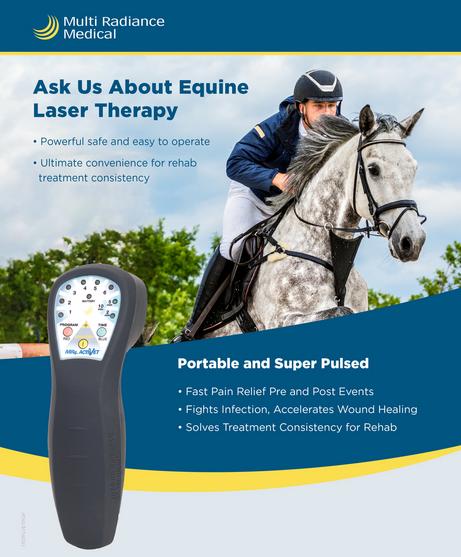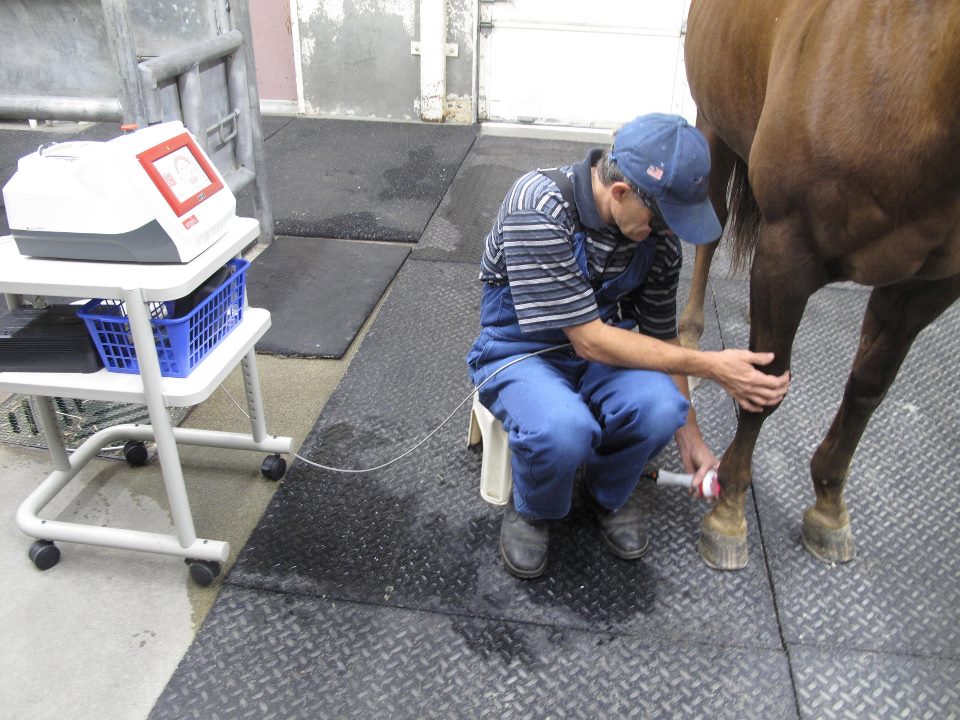The Power of Equine Therapy for Anxiety, PTSD, and Psychological Recovery
The Power of Equine Therapy for Anxiety, PTSD, and Psychological Recovery
Blog Article
Laser Treatment in Equine Therapy: A Modern Technique to Improving Steed Health And Wellness
Laser therapy has actually become a critical strategy in equine treatment, making use of concentrated light energy to promote cellular fixing and quicken recuperation from a selection of conditions. This non-invasive strategy is especially efficient in managing bone and joint injuries, wounds, and inflammatory problems, dramatically boosting total steed health and wellness. By promoting mitochondrial task and increasing ATP manufacturing, laser therapy not only boosts circulation yet likewise provides significant discomfort relief. As this cutting-edge therapy proceeds to acquire grip, it opens up appealing opportunities for attending to chronic conditions like arthritis and unguis issues, signaling a transformative change in veterinary care. What makes this technique particularly engaging?
Comprehending Laser Therapy
Laser treatment, a non-invasive therapy technique, has actually gotten substantial grip in equine medicine due to its efficacy in promoting healing and pain relief. Enhanced ATP degrees quicken cells repair service procedures and decrease swelling, making laser treatment specifically reliable for treating musculoskeletal injuries, injuries, and various other inflammatory conditions in steeds.
There are several sorts of lasers used in equine therapy, each with certain wavelengths and power results customized to various therapeutic demands. Low-level laser treatment (LLLT), additionally recognized as cool laser therapy, utilizes reduced power degrees to stimulate cell feature without triggering thermal damages. High-intensity laser therapy (HILT), in contrast, utilizes higher power levels to accomplish much deeper cells infiltration and more considerable therapeutic effects.
Veterinarians use numerous laser gadgets and strategies relying on the condition being dealt with and the desired depth of cells penetration. Proper training and competence are essential for guaranteeing the secure and effective application of laser treatment, consequently optimizing its healing potential while lessening dangers.
Benefits for Horse Wellness
With a strong understanding of how laser therapy functions, it is important to explore its many advantages for equine health and wellness. Among the main advantages is its ability to accelerate tissue fixing and cell growth. By boosting cellular feature, laser therapy promotes faster injury healing and aids in the regeneration of damaged tissues. This can be specifically helpful in decreasing healing times for steeds dealing with injuries.
In addition, laser treatment has actually been shown to improve circulation, thereby enhancing blood circulation to affected locations. Improved flow makes sure that vital nutrients and oxygen are provided a lot more efficiently, helping with the recovery procedure. In addition, laser treatment's anti-inflammatory effects assist in minimizing swelling and pain, which is essential for the total well-being of the steed.
Pain monitoring is one more significant advantage. By launching endorphins and obstructing pain signals, laser treatment offers reliable, non-invasive remedy for both acute and persistent pain. This can add to improved mobility and top quality of life for the animal.
Finally, laser therapy is a non-invasive treatment alternative, minimizing the threat of issues linked with even more invasive treatments. Its adaptability and efficiency make it an indispensable device in contemporary equine veterinary medication.
Typical Conditions Treated

One more widespread problem treated with laser treatment is arthritis. Steeds struggling with both severe and persistent arthritis gain from the anti-inflammatory results of laser treatment, which helps to reduce pain and boost joint function. In addition, laser treatment is used in the administration of injuries. Whether managing surgical lacerations or traumatic injuries, the modality promotes quicker cells repair and minimizes the risk of infection.
Equine breathing problems, such as persistent airway blockage (RAO), likewise respond favorably to laser treatment. The anti-inflammatory residential or commercial properties of the therapy help in minimizing airway inflammation, hence enhancing respiratory system function. In addition, laser therapy is advantageous in dealing with hoof problems, including laminitis and abscesses. By enhancing blood circulation and decreasing discomfort, it sustains quicker recovery.
Procedure and Security
Carrying out laser therapy in equine therapy entails a thorough procedure to ensure both efficacy and safety and security. Equine Therapy. The procedure starts with a detailed vet assessment to figure out the viability of laser treatment for the steed's details condition. Once considered appropriate, the therapy location is prepared by cleansing and, if required, clipping the hair to boost laser infiltration
The expert needs to pick the right type of laser, typically a low-level laser (LLLT) or a high-power laser (HPL), depending on the problem being treated. The laser tool is after that adjusted to the appropriate wavelength, power, and duration setups. During the application, the expert relocates the laser over the targeted area in a methodical fashion, making sure consistent and even direct exposure.
Safety and security methods are purely complied with, including making use of safety glasses for both the professional and the horse. In addition, it is critical to monitor the equine for any type of indications of discomfort or damaging reactions throughout the treatment. Post-treatment, the equine is frequently provided a duration of rest to permit the restorative results to materialize.

Future of Equine Laser Therapy
As innovations in vet medicine proceed to unravel, the future of equine laser treatment check this holds substantial guarantee. Emerging technologies and deeper scientific insights are readied to refine and expand the applications of laser therapy for steeds. Among one of the most expected developments is the integration of innovative imaging techniques that permit much more precise targeting of afflicted tissues, therefore boosting restorative end results. Additionally, the growth of mobile and easy to use laser devices is most likely to make this therapy extra accessible to a broader variety of professionals and equine proprietors.
Furthermore, recurring study into the molecular and mobile systems of laser therapy will likely produce maximized protocols customized to specific conditions, boosting efficiency and minimizing treatment times. Customized treatment strategies based upon genetic and biochemical markers can come to be a fact, guaranteeing that each horse obtains one of the most appropriate and efficient treatment.
Moreover, governing developments and standardization of methods will Visit Your URL certainly improve the reputation and dependability of laser treatment in equine practice. Equine Therapy. As these developments remain to emerge, equine laser treatment is poised to come to be an indispensable element of veterinary treatment, offering improved healing and enhanced lifestyle for horses globally
Verdict

Report this page